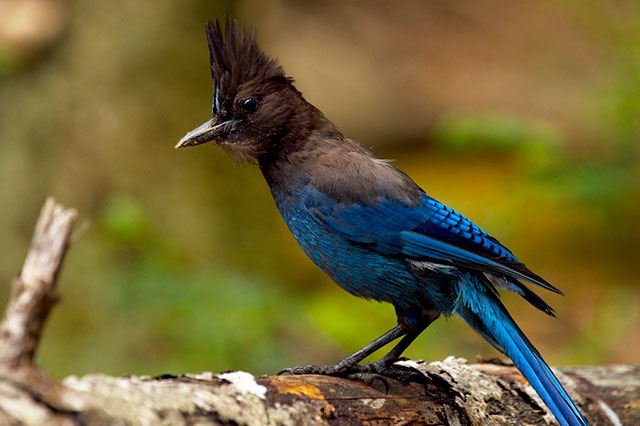
You can view the full episodes online at PBS.org.
In the case of the jays, members of the local campus population have been observed mimicking the calls of red-shouldered hawks—a top predator in the area—presumably to scare away competing species like juncos and squirrels. The episode also highlights burrowing owls, orcas, and sea otters.
“We know the jays do it, but we don’t know why,” says Will Goldenberg, a lecturer in the Film department and an alumnus of the HSU Wildlife program who worked on the project. “The behavior has been observed in jays all over, and the calls they mimic seems to depend on the predators in their area.” Goldenberg completed his graduate studies researching the jay’s interaction with humans at campsites.
The birds appear to choose the calls they mimic based on their surroundings. “In every jay population that you encounter up and down the coast, some individuals are mimicking other birds of prey. Right here on campus, we have jays that are mimicking red-shouldered hawks. Over in Sunny Brae and further down the mad river they mimic red-tailed hawks because that’s their territory,” says Wildlife Professor Jeff Black.
Footage was filmed in Black’s backyard, near the northeastern edge of campus. Black has studied the birds for 17 years in an on-going study that takes advantage of sightings from people in the area.
In fact, if you spot a banded Steller’s jay in the area, you’re encouraged to report the sighting, along with any associated data, online. The study is the longest running of its kind to focus on Steller’s jays.
Sightings reported to the study provide Black and fellow researchers with information to track individuals across the landscape and throughout the birds’ lifetimes. Not all jays will mimic predator’s calls, so Goldenberg and local filmmaker Alan Peterson of Redwood Planet Media relied on Black’s expertise to locate the individual birds for the show. “What’s great about jays, since they’re local residents, you can get to know the individuals and their personalities,” Goldenberg says.
Native to western North America, Steller’s Jays (Cyanocitta stelleri) are members of the Corvid family—the same group that includes crows, ravens, and magpies—and are considered some of the most intelligent birds in the world. Although Humboldt State’s jay population lives near campus year-round, the birds are most active—and visible—during breeding season from May to August.
Campus jays are identified by colored bands. Once a bird is spotted, it’s fitted with four colored leg bands—two on each leg. The order of the bands is recorded from right to left, bottom to top, Goldenberg explains. This unique I.D. card allows researchers to chronicle a bird’s behavior throughout its life.